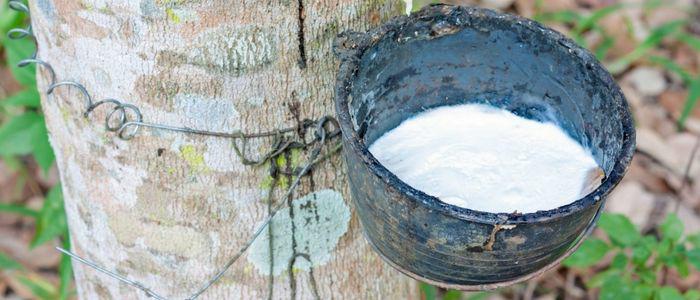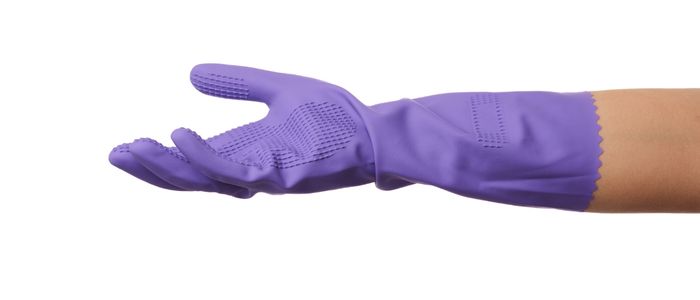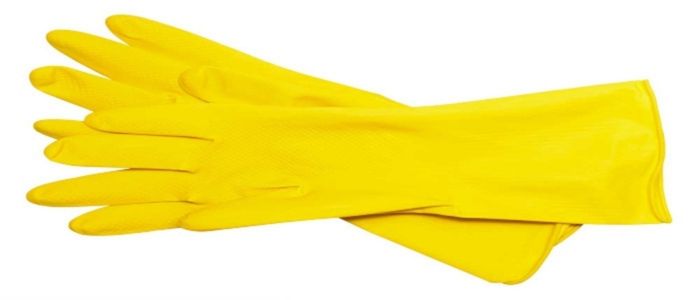What are rubber gloves?
Rubber gloves are utilized by individuals to serve a variety of purposes. While the majority of people consider to buy rubber gloves to be used for jobs that involve grease and oil however, they are also located in factories, hospitals or laboratories. They can also be found in other locations where safety and security are an important consideration.

In medical settings in medical applications, a rubber glove is among the most employed gloves. If you buy rubber gloves, they come in various sizes, shapes and thicknesses, and are made using various materials. They are made of latex derived from the rubber tree. However, in recent times synthetic latex gloves are becoming more well-known. It is a product which has been able to replace traditional rubber and cotton gloves for all surgeries and other medical procedures in which additional levels of protection are required.
Rubber Gloves Materials
The name itself suggests that they are generally composed of synthetic or natural latex that is utilized to protect the wearer and protect the wearer from being in contact with different substances. The term “rubber” is a reference to a tough, waterproof flexible material made from the sap of trees or synthetic latex. When you buy rubber gloves, there are two types of available gloves; unsupported (a glove entirely made from made of) and supported (a glove with an adhesive made of rubber over the textile glove).
There are many kinds of materials to know before you buy rubber gloves that are accessible to the general public. The principal materials used to make rubber gloves include latex, vinyl, and nitrile. Every type of glove has their own distinct characteristics.
This article will examine the differences among the three types of materials.

Latex
Natural rubber has long been the primary raw material for the making of gloves. It is made from the rubber tree’s sap and is processed using chemicals that provide it with properties such as elasticity and strength.
Since latex is rich in water and has a low rubber content – about 70% is water, protein resins, sterol glycosides sugars, and ash — it forms a stable, concentrated substance. You can buy rubber gloves made of latex to The Largest Manufacturer Of Disposable Rubber Gloves.
Products that are dipped in latex, like condoms and surgical gloves provide highly effective protection against microorganisms, such as viruses and bacteria. These products are also impervious to infective fluids. But natural rubber is an allergen that is very widespread. Vinyl gloves and nitrile don’t contain the proteins present in natural latex, therefore people who buy rubber gloves that have an allergy can use them without issues.

Nitrile
Nitrile gloves are constructed from nitrile rubber, and provide an effective shield against chemical, viruses, or caustic liquids. As opposed to latex, these gloves don’t contain the possibility of triggering allergies.
Acrylonitrile is a beneficial synthetic chemical, which is made of propylene, is manufactured in bulk by an ammoxidation procedure. This process is utilized for the production of textiles, resins and plastics. This is accomplished with propylene as the source material, and an oxidizing agent, such as ammonia. The catalyst may alter the characteristics in the end product.

Buy rubber gloves made of nitrile that were initially more costly than latex gloves due to an additional manufacturing step. However, advances in technology have resulted in cost-effective processes which are currently used for the production of nitrile gloves.
Polyisoprene
The properties of latex aren’t affected by latex allergies.
A synthetic substitute for latex is polyisoprene, a synthetic material. It has the exact physical properties of natural rubber latex: the highest elasticity and resistance to tears. But it is made synthetically. Therefore, it doesn’t contain any rubber proteins and therefore is free of latex allergens.
Polyisoprene is the most popular material used as a surgical glove, mostly for the purpose of allowing glove wearers to work in gloves even if they suffer from an allergy to latex. In addition, an increasing amount of healthcare institutions are switching to polyisoprene as a security measure to guard against the development of new allergies.

When it comes to the quality vinyl gloves aren’t as robust than latex or nitrile disposable glove and offer less protection against biohazards and chemicals. When you stretch your vinyl gloves, molecules split and the barrier of protection is disintegrated. The majority of people use vinyl gloves in areas with lower risk of exposure, because they are cheap and provide little protection.
Rubber Gloves Last for how long?

Rubber gloves are indispensable for a myriad of uses. They are useful in a variety of jobs, like food preparation, construction, and housekeeping preparation, gloves can help in making tasks more comfortable and also provide an additional layer of protection and hygiene. So, there’s a good chance you’ll have a bag or two of disposable gloves in your workplace or at any time.
With so many available to buy rubber gloves, it is difficult to determine the length of time they can be kept without degrading the performance for the item. So, if you’ve gloves that still work however, they’ve been sitting on the shelves of the store for quite a while it is likely that you aren’t aware of the time before they turn unusable.
How long will the life of a rubber glove? This is a common question that is asked, particularly when you buy rubber gloves in bulk. With the number of customers who buy rubber gloves in a hurry How do they know what time to keep them before using them?
Disposable Gloves Shelf-Life Guidelines
The longevity of a glove is contingent upon the way it was made as well as the materials used to construct it and also on the method by which it is kept. The life expectancy of disposable nitrile and latex gloves differs, but an average rule of thumb can be found that latex glove lasts for three years.

On the other hand, when you buy rubber gloves made from synthetic materials like nitrile Neoprene, PVC polyethylene, and other types of similar rubber gloves, they usually have a five-year shelf-life.
Although the manufacturers do not promise it but some disposable nitrile gloves are reported to last for up to 10 years of storage without noticeable or substantial harm, if they are stored within their packaging, and free from humid conditions. If the gloves were taken from the original package, or been exposed to water, but their shelf life decreases significantly.
Assessing A Rubber Glove
There is a Food and Drug Administration advises that, even after the expiration date of gloves, they could still offer some security. If you are unable to determine when the gloves will expire gloves, you should look for signs which indicate whether they are safe to use.
If the gloves appear suitable for use, they most likely are. If gloves aren’t visible damaged, they can be stretched to the fullest extent without breaking, cracking or breaking. This means that they are generally secure and provide sufficient protection.
The gloves that are unsafe will be clearly ineffective. If gloves appear discolored with visible holes or tears, or display other indications to wear and tear, they ought to be taken off. Additionally gloves that aren’t suitable for safety are soft and can easily tear, especially around the fingers and seams. They also have hardened surfaces that break when stretched. So, make sure to only buy rubber gloves from the most trusted seller online!

Storage Guidelines
- When you store disposable gloves, like nitrile and latex There are a lot of things to remember to maximize the shelf lifespan of the disposable gloves.
- Dispose of nitrile or latex gloves within a dark, cool space to stop the gloves from becoming degraded. Place the gloves that are disposable in a safe, dark area free of dust and other dangerous substances like under the sink, or in an unclean cabinet in the bedroom, kitchen or garage.
- To ensure the durability for your hands, keep your gloves in a container or drawer shielded from UV light and ozone. This includes fluorescent lamps as well as some electrical equipment which produce the ozone. The natural latex glove is extremely sensitive to these light sources, so make sure to protect them from the light.
- Rubber gloves are especially sensitive to temperatures. This is why it is crucial to keep gloves that are disposable away from heat sources such as steam pipes or radiators.
- To ensure the proper performance of your gloves To ensure proper glove performance, keep them in places that are heated from 70-90 degrees Fahrenheit. It is therefore beneficial to store natural rubber gloves at a temperature of 50 to 72 degrees F.
- Don’t remove the seal that protects your surgical gloves until are prepared to use the gloves. Exposed to harmful particles such as moisture, dust, or even extreme temperatures can cause damage to a disposable glove’s function regardless of how long the shelf-life of the glove is.
Conclusion
There isn’t a set standard regarding the length of time gloves can be utilized after the time you buy rubber gloves. But there are guidelines you can follow to determine if the gloves you purchased are suitable (and secure) to use. Every type of glove is different in the length of time it can be kept before it ceases to be effective.
No matter if you’re a maintenance worker, housekeeper, or a military supply expert, it’s crucial to understand the length of time rubber gloves last before they begin to wear off or they are no longer able to provide the security they are supposed to. The exact length of time will depend on a variety of factors, such as the brand of glove as well as how thick the glove is, increase their usefulness by keeping them in dry and cool areas.

